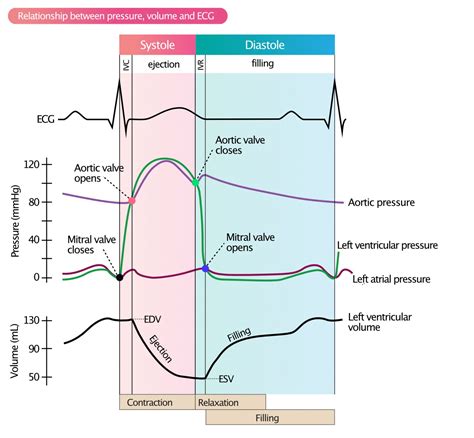lv pressure systole diastole | what is lv edv bp lv pressure systole diastole Left ventricular pressure-volume relationship and ECG waveforms during systole and diastole. When left ventricular pressure exceeds diastolic pressure in the aorta, the aortic valve opens and blood is ejected into the aorta. 4.5/5. Q&A. Online Services. Shop LES BEIGES Healthy Glow Foundation Hydration and Longwear and discover more Makeup at CHANEL.com. Shop now and enjoy complimentary samples.
0 · what is lv edv bp
1 · normal lv systolic pressure
2 · normal lv end diastolic pressure
3 · normal left ventricular diastolic pressure
4 · increased end diastolic pressure
5 · end systolic volume vs diastolic
6 · end diastolic pressure normal range
7 · elevated lv end diastolic pressure
Black acetate frame; Blue lenses; Thin gold-finish metal temples with a signature 'CD' hinge; 100% UVA/UVB protection; Filter category: 3; Not suitable for prescription; Made .
To illustrate the pressure-volume relationship for a single cardiac cycle, the cycle can be .Left ventricular pressure-volume relationship and ECG waveforms during systole and diastole. When left ventricular pressure exceeds diastolic pressure in the aorta, the aortic valve opens and blood is ejected into the aorta.To illustrate the pressure-volume relationship for a single cardiac cycle, the cycle can be divided into four basic phases: ventricular filling (phase a, diastole), isovolumetric contraction (phase b, systole), ejection (phase c, systole), and isovolumetric relaxation (phase d, diastole).Left ventricular (LV) diastolic function is characterized by LV relaxation, chamber stiffness, and early diastolic recoil, all of which determine LV filling pressure. Echocardiographic signals significantly associated with LV relaxation are mitral annulus early diastolic velocity (e′), LV strain rate during isovolumic relaxation (SR IVR .

Left ventricular diastolic dysfunction (LVDD) is a condition that affects your heart’s ability to fill up with blood before sending the blood out into your circulation. Your heartbeat has.As blood flows into the left ventricle, the pressure gradient between the left atrium and the ventricle diminishes, and the passive filling subsides. The greater the ventricular compliance, the larger the volume of blood that flows from the atrium to the ventricle during this phase.The cardiac cycle diagram (see figure) depicts changes in aortic pressure (AP), left ventricular pressure (LVP), left atrial pressure (LAP), left ventricular volume (LV Vol), and heart sounds during a single cycle of cardiac contraction and relaxation.Late in diastole, atrial contraction increases the atrial pressure, producing a second atrial-to-LV pressure gradient that again propels blood into the LV. After atrial systole, as the left atrium relaxes, its pressure decreases below the LV pressure, causing the mitral valve to begin closing.
Left ventricular (LV) diastolic function is characterized by LV relaxation, chamber stiffness, and early diastolic recoil, all of which determine LV filling pressure. Echocardiographic signals significantly associated with LV relaxation are mitral annulus early diastolic velocity (e′), LV strain rate during isovolumic relaxation (SR IVR .However, because the LA is exposed to LV pressures throughout the diastolic period and because LA function and emptying is influenced by LA afterload and properties of LV systolic shortening and diastolic lengthening, parameters of LAs can be considered indicative of LV diastolic relaxation and filling pressures and are therefore a useful . LV diastolic strain rate signals during isovolumic relaxation and during early diastole can be used as indices of LV relaxation, and the ratio of mitral peak E velocity to either can be used as a surrogate of LA pressure.Left ventricular pressure-volume relationship and ECG waveforms during systole and diastole. When left ventricular pressure exceeds diastolic pressure in the aorta, the aortic valve opens and blood is ejected into the aorta.
what is lv edv bp
To illustrate the pressure-volume relationship for a single cardiac cycle, the cycle can be divided into four basic phases: ventricular filling (phase a, diastole), isovolumetric contraction (phase b, systole), ejection (phase c, systole), and isovolumetric relaxation (phase d, diastole).
Left ventricular (LV) diastolic function is characterized by LV relaxation, chamber stiffness, and early diastolic recoil, all of which determine LV filling pressure. Echocardiographic signals significantly associated with LV relaxation are mitral annulus early diastolic velocity (e′), LV strain rate during isovolumic relaxation (SR IVR . Left ventricular diastolic dysfunction (LVDD) is a condition that affects your heart’s ability to fill up with blood before sending the blood out into your circulation. Your heartbeat has.
As blood flows into the left ventricle, the pressure gradient between the left atrium and the ventricle diminishes, and the passive filling subsides. The greater the ventricular compliance, the larger the volume of blood that flows from the atrium to the ventricle during this phase.The cardiac cycle diagram (see figure) depicts changes in aortic pressure (AP), left ventricular pressure (LVP), left atrial pressure (LAP), left ventricular volume (LV Vol), and heart sounds during a single cycle of cardiac contraction and relaxation.Late in diastole, atrial contraction increases the atrial pressure, producing a second atrial-to-LV pressure gradient that again propels blood into the LV. After atrial systole, as the left atrium relaxes, its pressure decreases below the LV pressure, causing the mitral valve to begin closing. Left ventricular (LV) diastolic function is characterized by LV relaxation, chamber stiffness, and early diastolic recoil, all of which determine LV filling pressure. Echocardiographic signals significantly associated with LV relaxation are mitral annulus early diastolic velocity (e′), LV strain rate during isovolumic relaxation (SR IVR .
normal lv systolic pressure
However, because the LA is exposed to LV pressures throughout the diastolic period and because LA function and emptying is influenced by LA afterload and properties of LV systolic shortening and diastolic lengthening, parameters of LAs can be considered indicative of LV diastolic relaxation and filling pressures and are therefore a useful .
hermes tas harga
normal lv end diastolic pressure
normal left ventricular diastolic pressure
increased end diastolic pressure
end systolic volume vs diastolic

$65.00
lv pressure systole diastole|what is lv edv bp
























